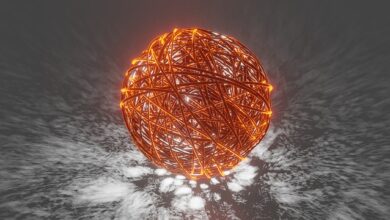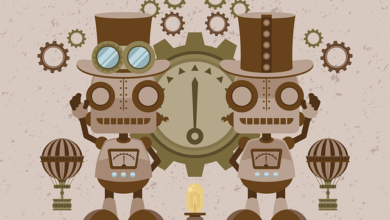Quantum Machine Learning for Pattern Recognition

Have you ever wondered how machines can recognize patterns in vast amounts of data? It’s like finding a needle in a haystack, but with the help of quantum machine learning, this process becomes even more powerful and efficient. Quantum machine learning combines the principles of quantum physics and artificial intelligence to enhance pattern recognition capabilities, opening up new frontiers in various fields.
But what exactly is quantum machine learning? In simple terms, it’s the application of quantum computing principles to traditional machine learning algorithms. Traditional computers use bits to represent information as either a 0 or a 1, while quantum computers utilize quantum bits or qubits that can exist simultaneously as both 0 and 1 due to a phenomenon known as superposition.
By leveraging superposition and other quantum phenomena like entanglement, quantum machine learning algorithms can process and analyze large datasets much faster than classical computers. This speed and computational power enable them to identify complex patterns and correlations that may be hidden within the data.
Imagine you’re trying to analyze a massive dataset containing millions of images. Traditional machine learning algorithms would take considerable time and resources to extract meaningful patterns from such a vast amount of information. However, with quantum machine learning, the process becomes exponentially faster, allowing for quicker and more accurate pattern recognition.
The applications of quantum machine learning for pattern recognition are widespread. From finance and healthcare to cybersecurity and drug discovery, this emerging field has the potential to revolutionize various industries. For example, in the medical field, quantum machine learning can aid in identifying disease patterns from patient data, leading to more accurate diagnoses and personalized treatments.
Furthermore, quantum machine learning has implications for advancements in artificial intelligence. By improving pattern recognition capabilities, quantum machine learning can enhance natural language processing, image and speech recognition, and even autonomous vehicle technologies.
Quantum machine learning holds tremendous promise in the realm of pattern recognition. Its ability to leverage the power of quantum computing to process and analyze vast amounts of data opens up new possibilities for various industries. As we continue to unlock the potential of this groundbreaking technology, the future of pattern recognition is set to be truly remarkable.
Revolutionizing Pattern Recognition: Quantum Machine Learning Takes Center Stage
Have you ever wondered how computers can recognize patterns and make predictions? It’s fascinating how technology has evolved to mimic human intelligence. And now, there’s a groundbreaking development in the field of pattern recognition that is set to reshape the future of artificial intelligence (AI): Quantum Machine Learning.
Quantum Machine Learning combines the principles of quantum mechanics with machine learning algorithms to unlock new possibilities for pattern recognition and data analysis. It leverages the power of quantum computing to process vast amounts of information and perform complex calculations at an unprecedented speed.
One of the key advantages of Quantum Machine Learning is its ability to handle massive datasets more efficiently than classical computers. Traditional machine learning algorithms struggle with large-scale data due to computational limitations. Quantum computers, on the other hand, can process and analyze immense volumes of information simultaneously, providing significant time and resource savings.
Imagine a scenario where healthcare professionals need to analyze millions of medical records to identify patterns and predict disease outbreaks. With Quantum Machine Learning, this task becomes much faster and more accurate, leading to improved diagnosis and treatment strategies. The potential applications extend beyond healthcare to various fields such as finance, logistics, and climate modeling.
Another remarkable aspect of Quantum Machine Learning is its potential to solve complex optimization problems. Many real-world challenges involve finding the best possible solution among numerous alternatives, such as optimizing supply chains or designing efficient transportation routes. Quantum algorithms can explore multiple solutions simultaneously, enabling faster and more effective decision-making processes.
However, it’s vital to note that Quantum Machine Learning is still in its infancy, and there are several challenges to overcome. One significant hurdle is the fragility of qubits, the basic units of quantum computation. They are highly sensitive to external disturbances, making it challenging to maintain their stability for long periods. Scientists and researchers are actively working on developing error-correcting techniques and robust quantum systems to address these issues.
Quantum Machine Learning is a groundbreaking approach that holds tremendous potential for revolutionizing pattern recognition and advancing AI. By harnessing the power of quantum computing, we can tackle complex problems more efficiently and unlock new frontiers in data analysis. As this field continues to evolve, we can expect exciting breakthroughs and applications that will shape the future of technology. The era of quantum-powered pattern recognition has just begun, and the possibilities are truly awe-inspiring.
Unlocking the Power of Quantum Computing: Quantum Machine Learning Breakthrough in Pattern Recognition
Are you ready to dive into the mind-bending world of quantum computing and witness a groundbreaking breakthrough in pattern recognition? Prepare to be amazed as we unlock the power of quantum machine learning!
Imagine a computer so powerful that it can process vast amounts of data simultaneously, solving complex problems with astonishing speed. That’s the essence of quantum computing. Unlike classical computers that use bits to represent information as either 0 or 1, quantum computers utilize quantum bits, or qubits, which can exist in multiple states at once, thanks to a phenomenon called superposition.
Now, let’s combine this mind-boggling concept with another cutting-edge field: machine learning. Machine learning algorithms enable computers to learn from data and make predictions or decisions without being explicitly programmed. When quantum computing and machine learning join forces, they form an unstoppable duo known as quantum machine learning.
Pattern recognition, a fundamental task in various domains, has always been a challenge for traditional computers. But here’s where quantum machine learning steps in, revolutionizing the way we approach this problem. By harnessing the power of qubits, quantum machine learning algorithms can explore all possible patterns simultaneously, exponentially speeding up pattern recognition tasks.
To understand the impact of this breakthrough, let’s consider an analogy. Imagine you’re searching for a needle in a haystack. With classical computing, you would check each straw individually, one by one, until you find the needle. It could take ages! However, with quantum machine learning, you don’t need to search straw by straw. You can magically examine all straws at once, instantly pinpointing the needle. Mind-blowing, right?

The implications of quantum machine learning in pattern recognition are enormous. From medical diagnosis to financial analysis, from image recognition to natural language processing, the ability to identify complex patterns swiftly opens up new frontiers for innovation. Quantum machine learning has the potential to revolutionize industries and drive advancements across various fields.
By combining the mind-bending power of quantum computing with the intelligence of machine learning, we are witnessing a groundbreaking breakthrough in pattern recognition. Quantum machine learning algorithms offer unparalleled speed and efficiency, exploring all possible patterns simultaneously. Brace yourself for a future where computers can unravel the most intricate patterns, transforming industries and pushing the boundaries of human knowledge.
Quantum Leap in AI: How Quantum Machine Learning is Transforming Pattern Recognition
Are you ready for a mind-blowing journey into the future? Brace yourself for a quantum leap in artificial intelligence! In this article, we’ll explore the fascinating realm where quantum machine learning meets pattern recognition. Get ready to dive deep into the cutting-edge world of AI and witness its astonishing transformation.

Picture this: traditional computers struggle to efficiently process complex tasks like pattern recognition due to their binary nature. Enter quantum computing, a game-changer in the tech world. By harnessing the power of quantum mechanics, these machines can handle mind-boggling computations at lightning-fast speeds. Now, combine this with the capabilities of machine learning, and you’ve got yourself an unrivaled force.
So, what exactly is quantum machine learning? It’s a revolutionary approach that utilizes quantum algorithms to enhance the performance of machine learning models. Think of it as giving AI a turbo boost. By leveraging the incredible properties of quantum systems, such as superposition and entanglement, researchers are pushing the boundaries of what’s possible.

Pattern recognition, one of the core challenges in AI, is being completely revolutionized by quantum machine learning. Traditional methods often struggle when faced with complex and high-dimensional data. Quantum algorithms, on the other hand, excel at handling these intricate patterns. By tapping into the quantum realm, AI systems can effortlessly navigate through vast amounts of information, uncover hidden patterns, and make accurate predictions with unprecedented precision.
With quantum machine learning, the possibilities are virtually limitless. Imagine medical diagnoses that go beyond human capabilities, financial market predictions that defy expectations, or even advanced image and speech recognition systems that outperform anything we’ve ever seen. The impact on various industries and fields is simply mind-boggling.
The emergence of quantum machine learning has triggered a seismic shift in pattern recognition within the realm of artificial intelligence. This fusion of quantum computing and machine learning is opening doors to endless possibilities. The future is here, and it’s brimming with awe-inspiring advancements that will reshape the way we perceive AI. So, fasten your seatbelts and get ready to witness the quantum leap in AI unfold before your very eyes!
Cracking the Code: Quantum Machine Learning Unveils Hidden Patterns with Unprecedented Accuracy
Quantum Machine Learning (QML) is revolutionizing the way we uncover hidden patterns and unravel complex data with unprecedented accuracy. Imagine having a powerful tool that can crack the code of intricate puzzles and reveal insights that were previously beyond our grasp. QML combines the principles of quantum physics and machine learning to push the boundaries of what is possible in data analysis.
With traditional computing, we encounter limitations when dealing with vast amounts of information. However, QML operates on the principles of superposition and entanglement, allowing it to process and manipulate multiple states simultaneously. This quantum advantage enables QML algorithms to explore a vast solution space in a fraction of the time it takes classical methods.
In essence, QML harnesses the power of quantum computing to enhance machine learning algorithms. By leveraging qubits, the fundamental building blocks of quantum systems, QML models can represent and process data in an entirely new way. These qubits can exist in multiple states simultaneously, offering an exponential increase in computational capacity compared to classical bits.
The potential applications of QML are vast and varied. From drug discovery to financial modeling, QML’s ability to recognize hidden patterns in complex datasets provides valuable insights across numerous industries. For example, in the field of genomics, QML can analyze massive genetic databases to identify subtle correlations between genes and diseases, leading to more targeted treatments.
Moreover, QML has the potential to transform artificial intelligence by enabling the development of more intelligent and adaptive systems. By incorporating quantum techniques into machine learning algorithms, we can enhance their ability to adapt to changing circumstances, making them more efficient and accurate in real-world scenarios.
However, it’s important to note that QML is still in its early stages, and there are many challenges to overcome. Quantum computers themselves are highly sensitive and require precise control to maintain stability. Additionally, developing robust QML algorithms that can effectively utilize quantum resources remains an active area of research.
Quantum Machine Learning offers a paradigm shift in our approach to data analysis. By harnessing the power of quantum computing, we can unlock hidden patterns and gain unprecedented accuracy in understanding complex datasets. While there are challenges to overcome, the potential of QML is awe-inspiring, and its applications have the potential to reshape numerous industries, advancing our understanding and capabilities in the world of machine learning.




